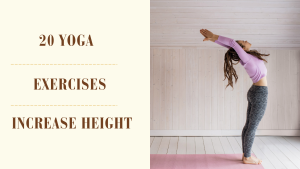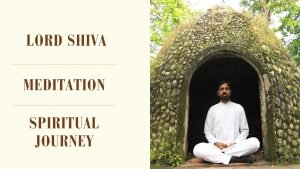Arm balance yoga poses are challenging to begin with, but they will be satisfying achievements in a yoga practice. In Aatm Yogashala we are sure everybody can open the beauty and power of these poses with the help and support. Our programs push your body, and develop your soul, physical strength, confidence, inner peace.
Those who want to take their practice a bit further or begin a new chapter, we would love to introduce you to the transformational ability of arm balances. Get ready to astonish yourself with what you can do – reserve your course now and you are starting to learn these powerful poses.
Benefits of Arm Balance Yoga Poses
It is important to know the advantages of such poses as they are beneficial to the general well being. These are not only a show of power but numerous physical and mental benefits are associated with them.
1. Power Building and Inner-city involvement
The greatest benefit is the strength that the arms, wrists and abdominal muscles have. Regular arm balances training build upper-body strength and core strength which are both essential in ensuring that the pose is safe.
2. Mental Focus and Improvement of Balance
Arm balances require a peaceful mind and controlled breathing. The concentration of mental and calmness on and off the mat is achieved through poses that help you enhance balance and sharpen your concentration.
3. Arm Balance Yoga Poses that are popular
We should also be familiar with the typical arm balance poses that most of the yogis do and these are popular poses used in the majority of yoga practices.
Popular Arm Balance Yoga Poses
Relating to a specific set of arm balance poses, it’s important to know the renowned postures that most yogis include in their practice.
1. Crow Pose (Bakasana)
One of the most common arm balances that form the basis of the practice is the crow pose where a person learns to support himself on hands. In this gateway pose, the issue of balance and perception of weight distribution is presented.
2. Plank Pose Variations
There are the traditional plank pose, side plank (Vasisthasana) and some variations. These differences are great in building arm balances in the wrists, arms and the core, as they are the prerequisites to more advanced arm balances.
3. Peacock Pose (Mayurasana)
The peacock pose which requires a profound knowledge of positioning and coordination does not only demand strength in the arm but also the flexibility of the wrists, the elbows and the abdominal muscles. Guidelines on how to practice Arm balance poses. Arm balance is a secure and productive implementation that can not be made safely or by intensely practicing brute strength.
Tips for Practicing Arm Balance Poses
Implementing arm balance poses safely and effectively involves more than just brute strength or rigorous practice.
1. Warm-up Exercises
Arm balances are warmed up by way of exercises that realign your wrists, arms, and core. With simple stretches and body strength exercises, you reduce the chances of injuries and increase the ease of the transitions.
2. Focus on the Breath
It is essential to have a steady and regulated breath. It makes the body breathe and can deal with the physical and mental strain of the challenging poses. Breathing and moving is a practice on the advanced level and gives more profound results.
3. Proper Alignment
Learning how to make the arm balances is the key to obtaining the advantages of balancing them without creating any strain or overworking. Adequate wrists, shoulders, and hips position not only ensures that you are safe but also makes the most out of the pose.
4. Gradual Progression
Yoga is not a place of arrival. Begin with easy arm balances and then gradually advance to more advanced poses to have a safe and efficient development. This is a slow method of allowing the body to adjust, becoming stronger and more balanced with time.
Related Article:- 50 Hour Teacher Training Course in India
Incorporating Arm Balances into Your Practice
You have been presented with the poses of arm balance and how to approach them safely. Now you have to incorporate these poses into your practice.
1. Flow Sequences
It is thrilling and healthy to come up with a flowing routine that involves arm balances. A series of arm balances intermingled with counterposes is a practice that is all-rounding in that it challenges the body and at the same time rests the body.
2. Modifications for Beginners
It is important to realize that not all people can jump out in a full arm balance position at once and it is quite all right. Modifications like the use of blocks or supported versions of the pose can enable beginners to step by step develop confidence and strength.
3. Building up to Advanced Poses
Through practice, the technique should be perfected, and the body should gain strength such that the yogis can progress to other difficult poses in arm balances. This development is dependent on learning the basics poses and mastering the mechanics of the move at each stage.
Conclusion
Arm balance poses demonstrate your level of growth and how serious you are about yoga. They aid in making you physically and mentally resilient and make the personal practice exciting. Keep in mind: patiently, persistently, and with such tips, you will be able to begin exploring the wonderful world of arm balances.
Top Questions & Solutions
Are arm balance yoga poses suitable for beginners?
Arm balances may be simplified to attract beginners with the help of props, adjustments and attention to basic power practices. A good way to begin with easier poses and then practice them until one moves to the harder ones is the best.
Can anyone learn to do arm balance yoga poses, or is it just for the flexible?
Arm balances do not focus so much on flexibility but on strength and technique. In spite of the fact that flexibility may be of assistance, everybody who trains and is committed can master how to perform arm balances in a safe and efficient manner.
How often should one practice arm balance yoga poses to see improvement?
You can improve your balances on the arm through regular practice (three to four times per week). Practice and emphasis on correct form help to speed up.
What can I do to overcome fear while attempting arm balance yoga poses?
Arm balances, as well as any yoga pose, is a science of facing and defeating fears. Confidence can be developed by a gradual process, a safe environment, and the foundation of strength that is strong.
Besides physical strength, what mental attributes would help in performing arm balance poses?
Just like physical strength, patience, determination and a readiness to learn by making a mistake are equally important. Being mindful and relaxed, particularly when poses are challenging, would enhance performance and increase your knowledge of the practice.




